Sometimes you get to know certain saints in a completely unusual way. It’s all individualized in the life of any person. Probably everyone has his own story about how he learned about this or that saint. And such events almost always bear the significance of a miracle.
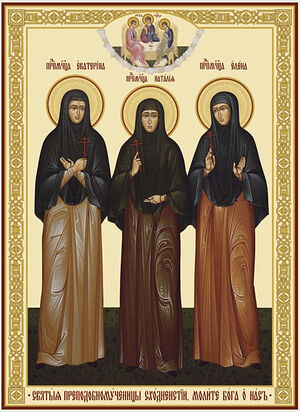 Icon of the Skhodnya Nun-Martyrs My whole family started going to Holy Trinity Church in Skhodnya when we moved from Moscow to this cozy suburb town twelve years ago. I can’t even remember for sure when I first saw the icon of the Skhodnya New Martyrs in our church. Perhaps it wasn’t there at first, but when I became aware of it, I felt great joy, as if I had unexpectedly met my own kin, some very dear people. By that time, the New Martyrs and Confessors of the Russian Church had become so close to me that such an encounter was something important for me, something significant, and at the same time very bright and solemn.
Icon of the Skhodnya Nun-Martyrs My whole family started going to Holy Trinity Church in Skhodnya when we moved from Moscow to this cozy suburb town twelve years ago. I can’t even remember for sure when I first saw the icon of the Skhodnya New Martyrs in our church. Perhaps it wasn’t there at first, but when I became aware of it, I felt great joy, as if I had unexpectedly met my own kin, some very dear people. By that time, the New Martyrs and Confessors of the Russian Church had become so close to me that such an encounter was something important for me, something significant, and at the same time very bright and solemn.
That’s how it is: You do a search online about the New Martyrs, and it turns out there are three of them in your local church: The Nun-Martyrs Natalia (Baklanova), Elena (Korobkova), and Ekaterina (Konstantinova). All of them were parishioners of Holy Trinity Church at one time. All of them suffered for their faith. Nun Natalia died in a camp hospital. Nun Elena also died in a camp. Novice Ekaterina was shot in Butovo. All three of their lives are very short, one and a half pages each. There are surviving photographs of Nun Natalia and Novice Ekaterina. It’s such a joy that there is information and photos—this isn’t the case for many of the 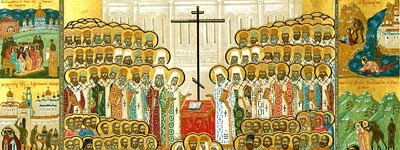 New Martyrs and Confessors of Russia
New Martyrs and Confessors of Russia
“>New Martyrs. There’s often nothing to write about these sufferers: He lived, he served, he was arrested, he was shot for faith in Christ. That’s it. Therefore, I truly rejoiced for our parishioners and for myself that we even know our saints by sight!
Several years later, our family was lucky enough to get land for a new dacha in the Moscow Province, near Solnechnogorsk, and we started digging there enthusiastically. In the summer, the whole family went out to the new dacha, and we went to the church there, of course. Although the village where we bought land has a Church of the Holy Protection. My husband liked the magnificent five-altar Church of the Dormition of the Mother of God in the village of Obukhovo, and that’s where we started going. My husband would drive us, and we’d all pour out of the car like peas, straight through the gate to the church. After the service we’d hurry home to get our youngest child fed.
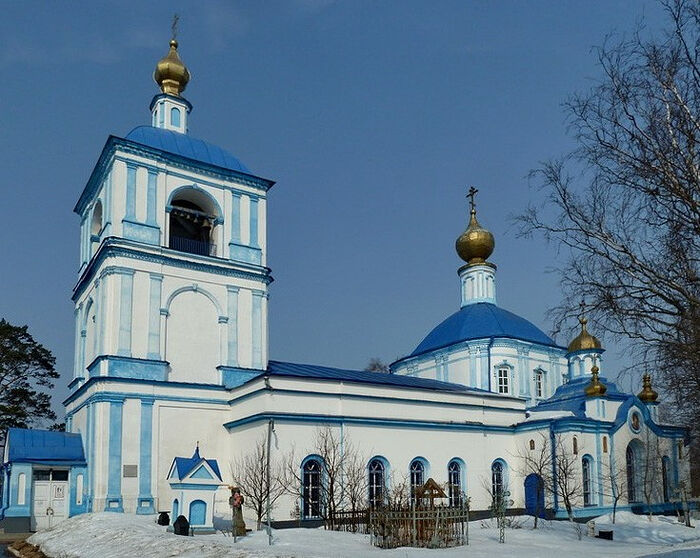 Holy Dormition Church in Obukhovo
Holy Dormition Church in Obukhovo
It was 2019. In July, we had another baby. That summer, we went to church exactly as I described it. But the next summer, our one-year-old and I had to clomp around outside the church, because I didn’t think I should clomp around with the baby inside the church. And so, bent down, holding the hand of a briskly stomping child, I turned a corner of the church building where I’d never been before, and in my periphery, I saw a familiar face on the wall of the church. The baby was happily stomping ahead, so I took a closer look the second time around. Imagine my surprise when I realized it was a photo of Novice Ekaterina, which, surrounded by other photos, framed a schematic image of the Solnechnogorsk District, with an inscription above saying something like, “Holy New Martyrs of Solnechnogorsk.” “Wait, wait!” flashed through my head. “Who are these New Martyrs of Solnechnogorsk? This is our Ekaterina Konstaninova, of Skhodnya! Our hometown saint!” This made me study her life in more detail, although by then I’d already posted a shortened version in my group about the Russian New Martyrs and Confessors several times.
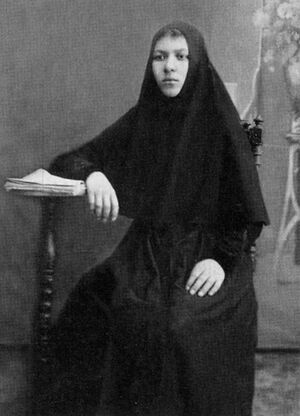 Nun-Martyr Ekaterina By the way, that same day, I found out that the Dormition Church has its Heavenly patrons: One of the rectors of the church, Fr. Pavel Ivanov, is now glorified in the host of New Martyrs, commemorated on June 27. He was shot in Butovo in 1938, three months after the execution of the Novice Ekaterina. Fr. John Tarasov (December 8) and Protodeacon Nikolai Goryunov (March 22) are also directly related to this church, having both served there.
Nun-Martyr Ekaterina By the way, that same day, I found out that the Dormition Church has its Heavenly patrons: One of the rectors of the church, Fr. Pavel Ivanov, is now glorified in the host of New Martyrs, commemorated on June 27. He was shot in Butovo in 1938, three months after the execution of the Novice Ekaterina. Fr. John Tarasov (December 8) and Protodeacon Nikolai Goryunov (March 22) are also directly related to this church, having both served there.
The life of Novice Ekaterina doesn’t say a single word about Skhodnya (this geographical name isn’t mentioned once), but it does mention Solnechnogorsk: She was in prison there. You may ask me, dear reader: “So then what does she have to do with the Nun-Martyrs of Skhodnya?” Allow me to explain.
Ekaterina was born in 1887 in the village of Savrasovo, which is now in the Skhodnya District. The nearest church was in Skhodnya itself. At first it was a wooden, summer building, built in 1903, when Ekaterina was 16. In 1907, they built a winter altar. In 1909, the church completely burned down, so in 1910, a new stone church was built. The Holy Trinity Church in Skhodnya was active until 1936, when it was closed. When the church was transferred to the faithful in the early 1990s, there was a granite workshop in the church building, where they made statues of Lenin and Stalin. The sculptors were quite aggressively opposed to the transfer. Wikipedia says the liberation of the building had to be won through an arbitration court. But the old-timers say the sculptors were expelled from the church by the Theotokos herself.
At that time, as already mentioned, the church was the workshop of two sculptors who made large figures of party leaders—the high ceiling was just right. The church was given to the Orthodox Church, but the sculptors either weren’t informed of it, or they didn’t understand something. In general, when our ever-memorable rector Fr. Nikolai Ryzhenkov, 25-years-old at that time, an unathletic young man, went to the church building and asked the sculptors to vacate the premises, they threw him out of the church in stern silence, sticking him in a snowdrift. The young priest went there every day with the same request, and every day they threw him out of the church into the snowdrift. In the end, realizing they couldn’t get rid of the stubborn priest that easily, they proposed: “Father, how about we give you a monthly payment, and you don’t come here anymore?” And they offered what was a huge amount for those difficult times. Batiushka politely rejected the offer and continued his daily visits.
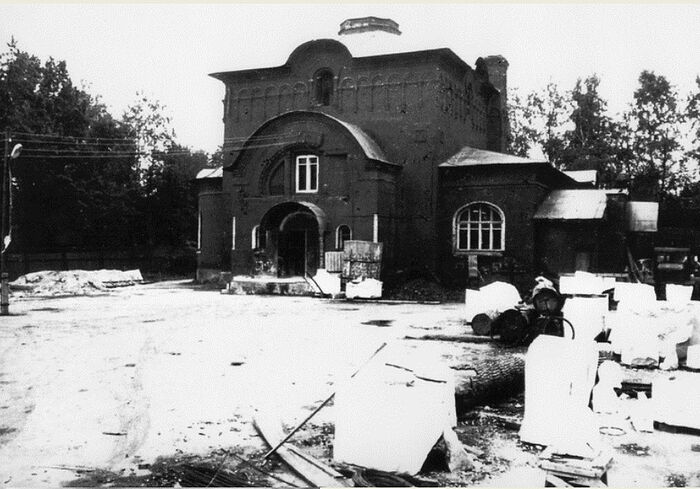 Holy Trinity Church in Skhodnya before it was given back to the Russian Orthodox Church
Holy Trinity Church in Skhodnya before it was given back to the Russian Orthodox Church
And then a parish group of twenty was formed. The future parishioners began to unite around Batiushka, and Fr. Nikolai no longer had to go to the sculptors alone, but accompanied by two or three activists. Still, there was no way to expel the sculptors from the church.
One wonderful morning, Batiushka and several activists, including the parishioner who told me this story, arrived at the church to find the doors wide open and a complete mess inside the church, and no trace of anyone living. By all indications, the church was hastily abandoned by the sculptors—they didn’t even take their expensive tools. After waiting a few days, the parishioners started cleaning up in the church. After a while, the priest was summoned to the authorities. The sculptors had filed a complaint against him. Mind you, dear reader, it was something official.
Batiushka was accused of using some unseen special means to scare the poor unfortunate sculptors half to death, remotely showing them in a way incomprehensible to science, in one of the side altars in the church right under the arches, a large, three-dimensional image of some majestic woman with a Child. The image was from the waist up. The Child was standing, and the woman, with a stern face and hands lowered, commanded the sculptors, in a stern voice, to clear out of the church before something bad happened to them. The sculptors were so scared that even some time later they flatly refused, to go to the church grounds to take their tools, which had been packed up for them.
The image appeared precisely in the place where, according to historical information, there used to be a  Kazan Icon of the Mother of God
Kazan Icon of the Mother of God
“>Kazan Icon of the Mother of God. And it’s in that place now, carefully preserved by the former parishioners and handed over to the church by their descendants.
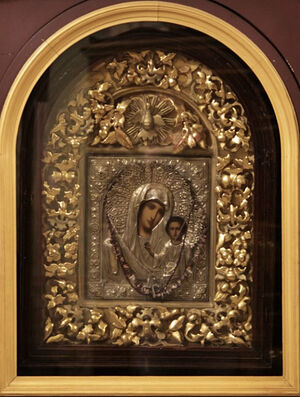 Kazan Icon of the Mother of God in Holy Trinity Church in Skhodnya Needless to say, our dear Fr. Nikolai had nothing to do with the miraculous appearance of the image of the Most Holy Theotokos to the sculptors. In the physical sense, at least.
Kazan Icon of the Mother of God in Holy Trinity Church in Skhodnya Needless to say, our dear Fr. Nikolai had nothing to do with the miraculous appearance of the image of the Most Holy Theotokos to the sculptors. In the physical sense, at least.
It was this church that Ekaterina attended for several years until 1905, when she came of age and entered the Joy of All Who Sorrow Monastery in Moscow.
Nothing is known about the next thirteen years of Novice Ekaterina’s life, save that she had an obedience as a seamstress. It was probably a truly monastic life, striving to please the Lord and serve Him. Thirteen years is a long time. During this time, the Novice Ekaterina was imbued with the wonderful oil of true monasticism, which allowed her to stand firmly in the faith of Christ despite the coming trials and tribulations.
In 1918, the monastery was closed, and Ekaterina returned to Sarvasovo. It was, harsh though it may sound, providential: Within a year, her sister would die, followed by her sister’s husband, and their three young children would be orphans. Ekaterina took over the care of the children. She raised, fed, and educated them. Before the revolution, her father was a well-to-do peasant who ran a carpentry workshop and a grocery store. But after the revolution, the Bolsheviks confiscated all the family’s property. How did Novice Ekaterina cope? She earned a little by sewing blankets to order. Her monastic sewing obedience came in handy. At the same time, she strictly fulfilled all the monastic rules, and as it is written in her life, tried to go to church as often as possible, to Holy Trinity Church in Skhodnya, and therefore, dear reader, we consider her our own. The walls of our church are saturated with the prayers and perhaps the hymns of Nun-Martyr Ekaterina. These walls remember her.
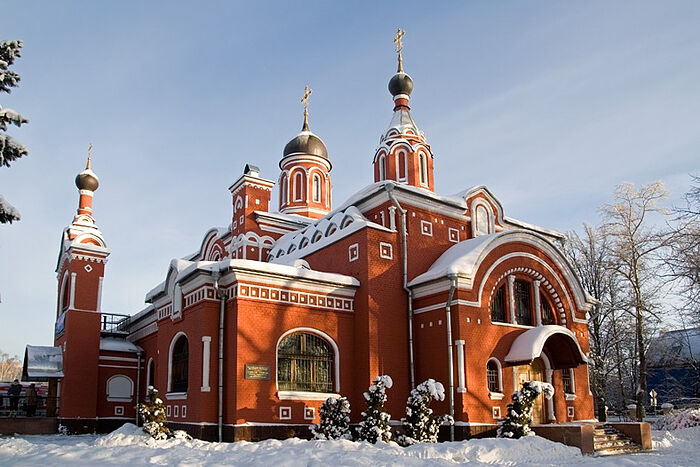 Holy Trinity Church in Skhodnya
Holy Trinity Church in Skhodnya
Novice Ekaterina was able to go to the Holy Trinity Church all the way up until 1936, when it was closed. It’s amazing that in a time of God-fighting and satanic hatred for all things Orthodox, the Lord granted Novice Ekaterina twenty calm years. There’s no information about her being summoned by the police, persecuted, interrogated… They came for her only in the brutal year of 1938, when she was arrested based on false testimony.
This was typical for those times. A witness testified that Novice Ekaterina said the following: “Here they go again, some elections are needed, what for, if there are those in power? Let them lead for the time being or are they afraid of war. They’ve jailed some, now they have to choose new ones, but there’s nothing to choose from, they’re already chosen, and they are squeezing well as it is; look how poorly you lived under the tsarist power, see how your communists are being shot, but this too shall end.” And some other absurdities. If we compare these texts with the testimony of Novice Ekaterina herself, even the style of speech differs strikingly. Ekaterina spoke clearly, correctly, coherently, without slang.
On February 23, 1938, the Solnechnogorsk Police drew up the necessary order on the basis of “witness testimony,” and the next day, they came for Ekaterina. For some reason, the first thought that came to her mind was: “I managed to raise the children.” Although this isn’t a monastic task at all, the Lord showed His mercy to her: She didn’t have to worry about the children—they were already grown.
The investigation was very interested in the novice’s contacts: Usually anyone who was named during such interrogations was then subject to arrest. The investigators were especially interested in her monastic contacts.
Novice Ekaterina had been in contact with Nun Natalia (Baklanova) and the Proshkin sisters who were with her—all the women were parishioners of Holy Trinity Church in Skhodnya. By the time Novice Ekaterina was arrested they had all been arrested already, so Ekaterina answered the investigator’s questions directly:
I have a number of other nuns I know. We go to pray together… I would meet with them only in church. They’ve all been arrested. I went to their apartment once.
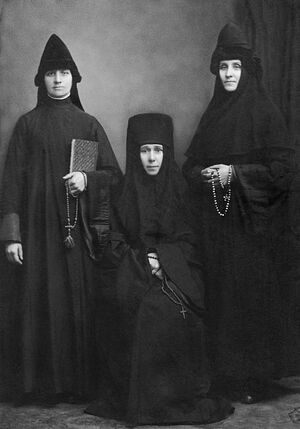 Nun Natalia (Baklanova) in the center, with Novices Evdokia and Anastasia Proshkin The investigation was also interested in what the nuns spoke about. To this, Novice Ekaterina responded:
Nun Natalia (Baklanova) in the center, with Novices Evdokia and Anastasia Proshkin The investigation was also interested in what the nuns spoke about. To this, Novice Ekaterina responded:
I do not confess to counter-revolutionary agitation, but the nuns and I shared our personal opinions among ourselves that things were good under the Tsar, and bad under the Soviets. What exactly we said, I can’t recall right now.
But Ekaterina’s fervent counter-revolution was “confirmed” by a fellow villager. Supposedly, the novice was dissatisfied with the collective farm’s greenhouses, saying they spent a lot of money and yet the people were swollen with hunger.
The decision regarding Novice Ekaterina was made on March 11, 1938. The NKVD Troika in the Moscow Province resolved: Ekaterina Grigorievna Konstantinova was to be shot for systematic counter-revolutionary agitation, for expressing terrorist intentions, for anti-collective farm conversations, and for spreading slander about a famine in the USSR.
Sister Ekaterina was shot on March 20, 1938 at the NKVD Butovo training ground.
And we feel that we are under the prayerful protection of our holy Nun-Martyr Ekaterina, whenever and wherever we go. By the great grace of God, she is venerated in both the churches that we love and where our entire family goes to church.
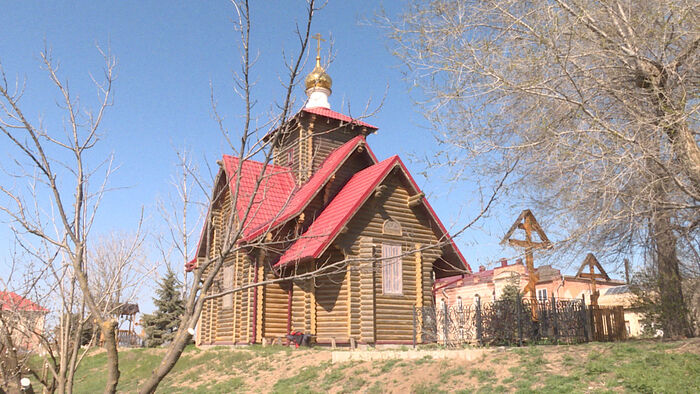 Photo: lotosgtrk.ru
Photo: lotosgtrk.ru 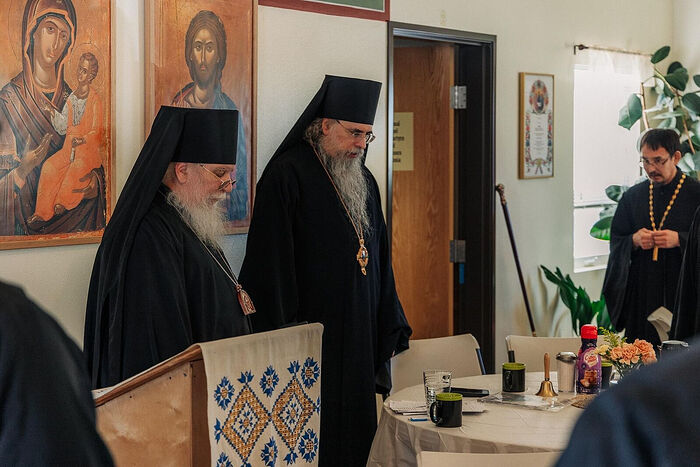
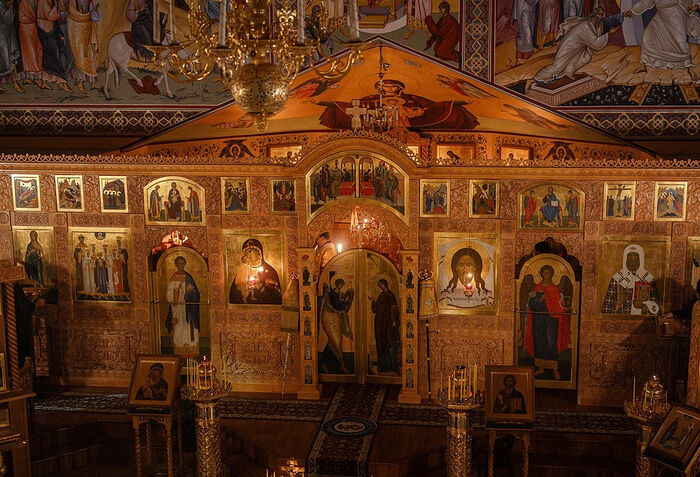

 New Martyrs and Confessors of Russia
New Martyrs and Confessors of Russia


 Kazan Icon of the Mother of God
Kazan Icon of the Mother of God


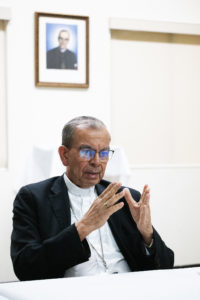
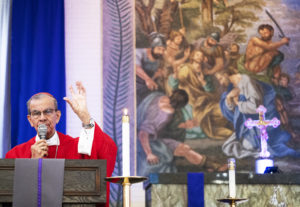
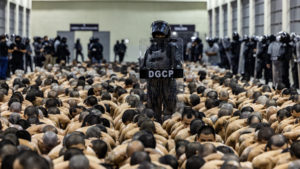
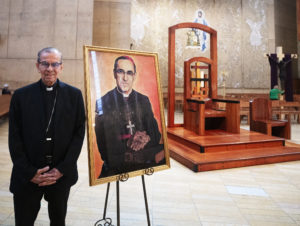
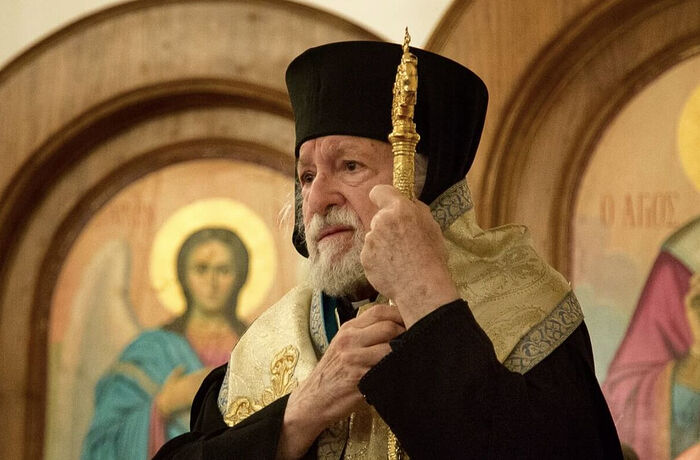
 Becoming His Eminence (VIDEO)In this short film, directed and produced by Andrew Shebay, and edited by Michael Hurley, His Eminence Metropolitan Isaiah of Denver (Greek Orthodox Archdiocese) shares some thoughts on how he entered a life of service in the Church, and on the calling of all Christians.
Becoming His Eminence (VIDEO)In this short film, directed and produced by Andrew Shebay, and edited by Michael Hurley, His Eminence Metropolitan Isaiah of Denver (Greek Orthodox Archdiocese) shares some thoughts on how he entered a life of service in the Church, and on the calling of all Christians.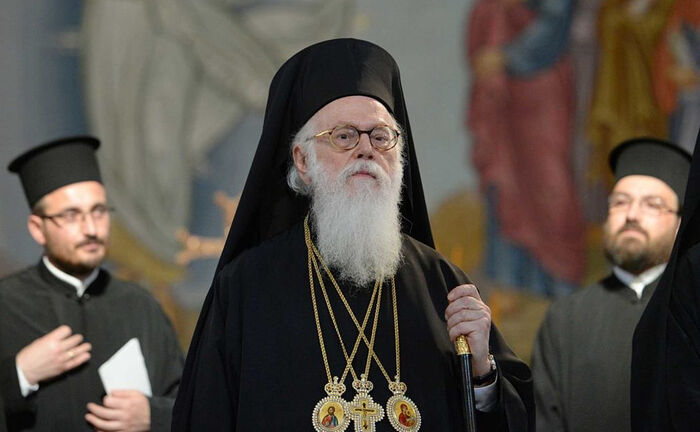
 Albanian Church publishes full text of letters to Pat. Kirill, opposes Russian Church’s break in communion with ConstantinopleThe Albanian Church has published the full text of two letters of Abp. Anastasios to Pat. Kirill which show that while Abp. Anastasios is gravely concerned about Constantinople’s actions in Ukraine, he also does not support the Russian Church’s decisions to first cease commemorating Pat. Bartholomew and later to fully break communion with the Patriarchate of Constantinople.
Albanian Church publishes full text of letters to Pat. Kirill, opposes Russian Church’s break in communion with ConstantinopleThe Albanian Church has published the full text of two letters of Abp. Anastasios to Pat. Kirill which show that while Abp. Anastasios is gravely concerned about Constantinople’s actions in Ukraine, he also does not support the Russian Church’s decisions to first cease commemorating Pat. Bartholomew and later to fully break communion with the Patriarchate of Constantinople. Patriarchate of Alexandria defrocks second Russian Exarch of AfricaBp. Konstantin commented simply: “The fact of the matter is that I am a bishop of the Russian Orthodox Church. I am subordinate to the Patriarch of Moscow and All Russia as his vicar and to the Holy Synod of the Russian Orthodox Church as any of its bishops.”
Patriarchate of Alexandria defrocks second Russian Exarch of AfricaBp. Konstantin commented simply: “The fact of the matter is that I am a bishop of the Russian Orthodox Church. I am subordinate to the Patriarch of Moscow and All Russia as his vicar and to the Holy Synod of the Russian Orthodox Church as any of its bishops.” Patriarch Theodoros stops commemorating Patriarch Kirill, Russian Exarch declared defrocked by AlexandriaToday’s decision from Alexandria marks the first time another primate has ceased commemorating Pat. Kirill.”>November 2022, in addition to two Russian priests already in
Patriarch Theodoros stops commemorating Patriarch Kirill, Russian Exarch declared defrocked by AlexandriaToday’s decision from Alexandria marks the first time another primate has ceased commemorating Pat. Kirill.”>November 2022, in addition to two Russian priests already in  Patriarchate of Alexandria rules to defrock two Russian priestsThe priests were tried in absentia. Fr. Andrei has already returned to Russia, while Fr. George remains in Africa but did not appear at the trial.”>February 2022.
Patriarchate of Alexandria rules to defrock two Russian priestsThe priests were tried in absentia. Fr. Andrei has already returned to Russia, while Fr. George remains in Africa but did not appear at the trial.”>February 2022.  Archbishop of Albania supports persecuted UOC hierarchs“We share in your sufferings and, to the best of our ability, share our testimony of the atrocities committed against the righteous Orthodox clergy, pious people, and famous holy sites of Ukraine.”
Archbishop of Albania supports persecuted UOC hierarchs“We share in your sufferings and, to the best of our ability, share our testimony of the atrocities committed against the righteous Orthodox clergy, pious people, and famous holy sites of Ukraine.”